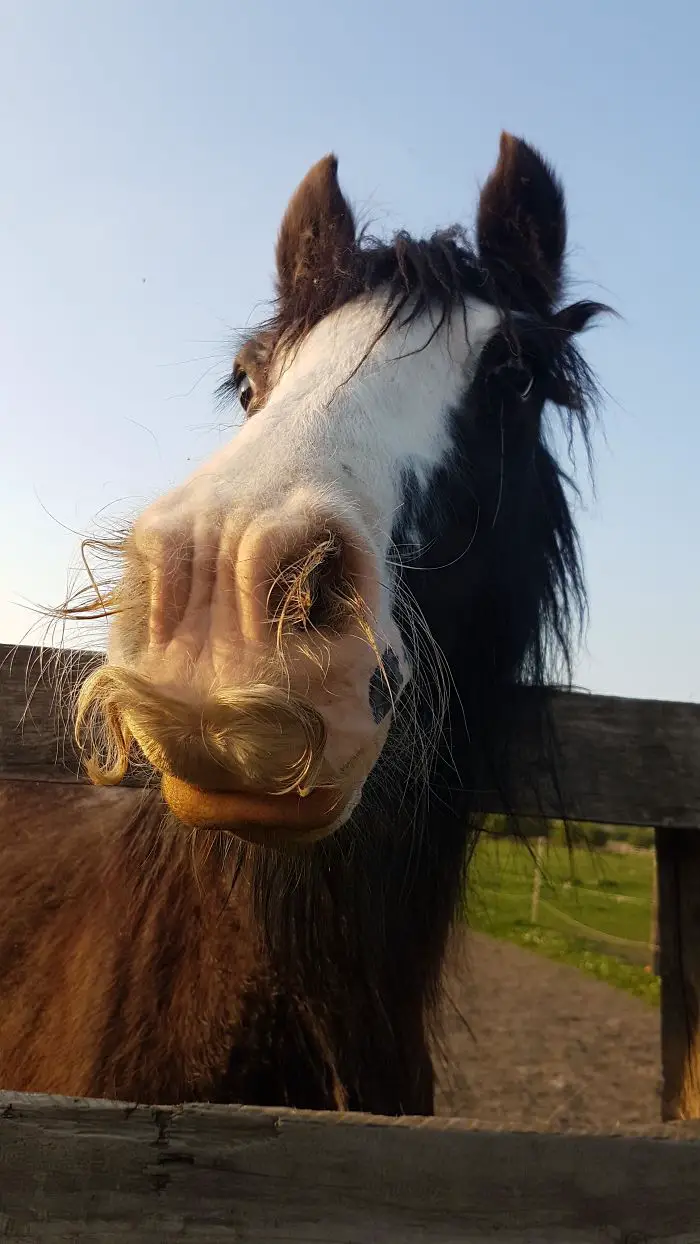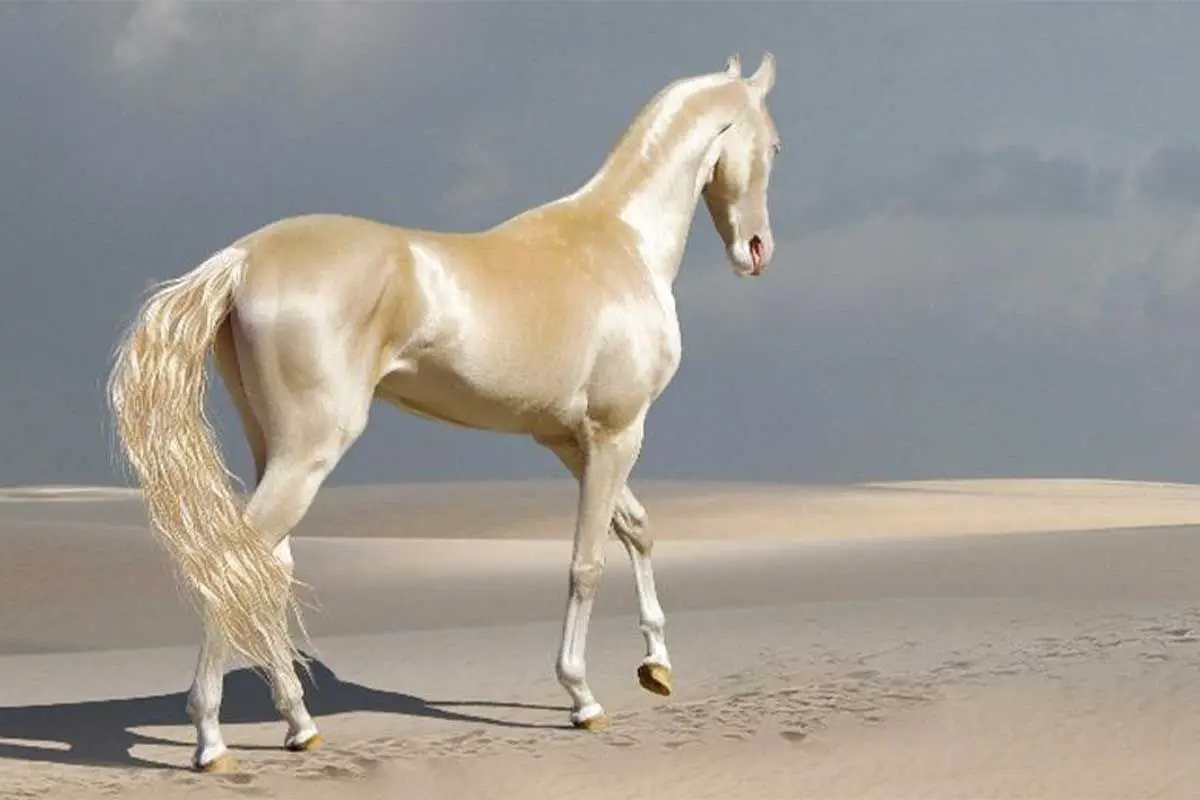Horses are known for their majestic beauty and strength. There are many different breeds of horses, each with its own unique characteristics and features. One interesting trait that some horse breeds possess is a mustache. Yes, you read that right – some horses actually have a mustache! In this article, we will explore the breeds of horses that have this distinctive feature and delve into the reasons behind it.
What Breed of Horse Has a Mustache?

When you think of a mustache, the image of a dapper gentleman may come to mind. However, in the equine world, certain horse breeds sport their own version of this facial hair. The Gypsy Vanner horse, also known as the Irish Cob, is a breed that is often associated with having a mustache. These captivating horses are renowned for their luxurious, flowing manes and feathers, and some individuals of this breed also boast a charming tuft of hair on their upper lip.
The Gypsy Vanner Horse
The Gypsy Vanner horse originates from the United Kingdom and Ireland, where it was traditionally used by the Romani people to pull their caravans. These horses are known for their gentle nature, striking appearance, and, of course, their distinctive mustaches. The tuft of hair under their nostrils gives them a unique and endearing look that sets them apart from other breeds.
Physical Characteristics
In addition to their mustaches, Gypsy Vanner horses are known for their strikingly beautiful and flowing manes and tails, as well as their feathering on the lower legs. They are typically of a draft horse build, with strong, muscular bodies and a kind and docile temperament. The breed standard allows for a wide range of coat colors and patterns, adding to their overall allure.
Historical Significance
The Gypsy Vanner horse has a rich history deeply intertwined with the Romani people, who are known for their nomadic lifestyle and deep connection with horses. These captivating animals were an integral part of the Romani way of life, serving as loyal companions and reliable workers. Today, the Gypsy Vanner horse continues to captivate horse enthusiasts around the world with its unique combination of beauty, strength, and, of course, its charming mustache.
Why Do Some Horses Have Mustaches?

The presence of a mustache on certain horse breeds may leave some people wondering about its purpose and significance. While it may not serve a functional purpose in the same way as some other equine features, such as a horse’s mane or tail, the mustache can be considered a distinctive and endearing trait that adds to the overall charm of the horse.
Natural Variation
Just as humans and other animals exhibit a wide range of physical traits, horses also display natural variation in their appearance. This includes variations in coat color, markings, and other unique characteristics, such as the presence of a mustache. While not all members of a particular breed may have a mustache, it is a natural variation that adds to the individuality of the horse.
Genetic Factors
The presence of a mustache in certain horse breeds can also be attributed to genetic factors. Breeds like the Gypsy Vanner horse have been selectively bred for specific traits over generations, and the presence of a mustache may be a result of these breeding practices. It is important to note that not all members of these breeds will have a mustache, and it is just one of the many unique traits that make each horse an individual.
Aesthetic Appeal
From an aesthetic standpoint, a mustache can enhance the overall appearance of a horse, adding to its charm and allure. Whether it’s the playful tuft of hair on a Gypsy Vanner’s upper lip or the elegant whiskers of a Friesian horse, the presence of a mustache can give a horse a distinguished and charismatic look that captivates the hearts of horse lovers and enthusiasts.
Other Horse Breeds with Unique Facial Hair

While the Gypsy Vanner horse is perhaps the most well-known breed with a mustache, there are other horse breeds that exhibit unique facial hair characteristics. One such example is the Friesian horse, a breed renowned for its striking black coat and luxurious mane and tail. Some individuals of this breed also have elegant whiskers that add to their regal appearance.
The Friesian Horse
Originating from the Netherlands, the Friesian horse is a breed known for its grace, beauty, and powerful build. These horses have a long and storied history, having been used as war horses in medieval times and later as carriage horses. Today, they are admired for their elegant appearance and charismatic presence.
Distinctive Whiskers
In addition to their flowing manes and tails, some Friesian horses also have distinctive whiskers on their muzzles. These whiskers, which can be seen on some individuals of the breed, add to the overall allure of the Friesian horse and contribute to its unique and distinguished appearance.
Interested in learning more about different horse breeds? Check out our articles on how tall a horse is, how tall a Shire horse is, and how big a horse is for fascinating insights into the world of horses!
Conclusion

In the world of horses, there are many different breeds, each with its own set of unique characteristics and features. The presence of a mustache on certain horse breeds adds to the individuality and charm of these magnificent animals. From the Gypsy Vanner horse with its endearing tuft of hair to the elegant whiskers of the Friesian horse, these distinctive facial hair traits contribute to the overall allure and charisma of these breeds. Whether for natural variation, genetic factors, or simply for aesthetic appeal, the mustache is just one of the many fascinating aspects that make horses such captivating and enchanting creatures.



